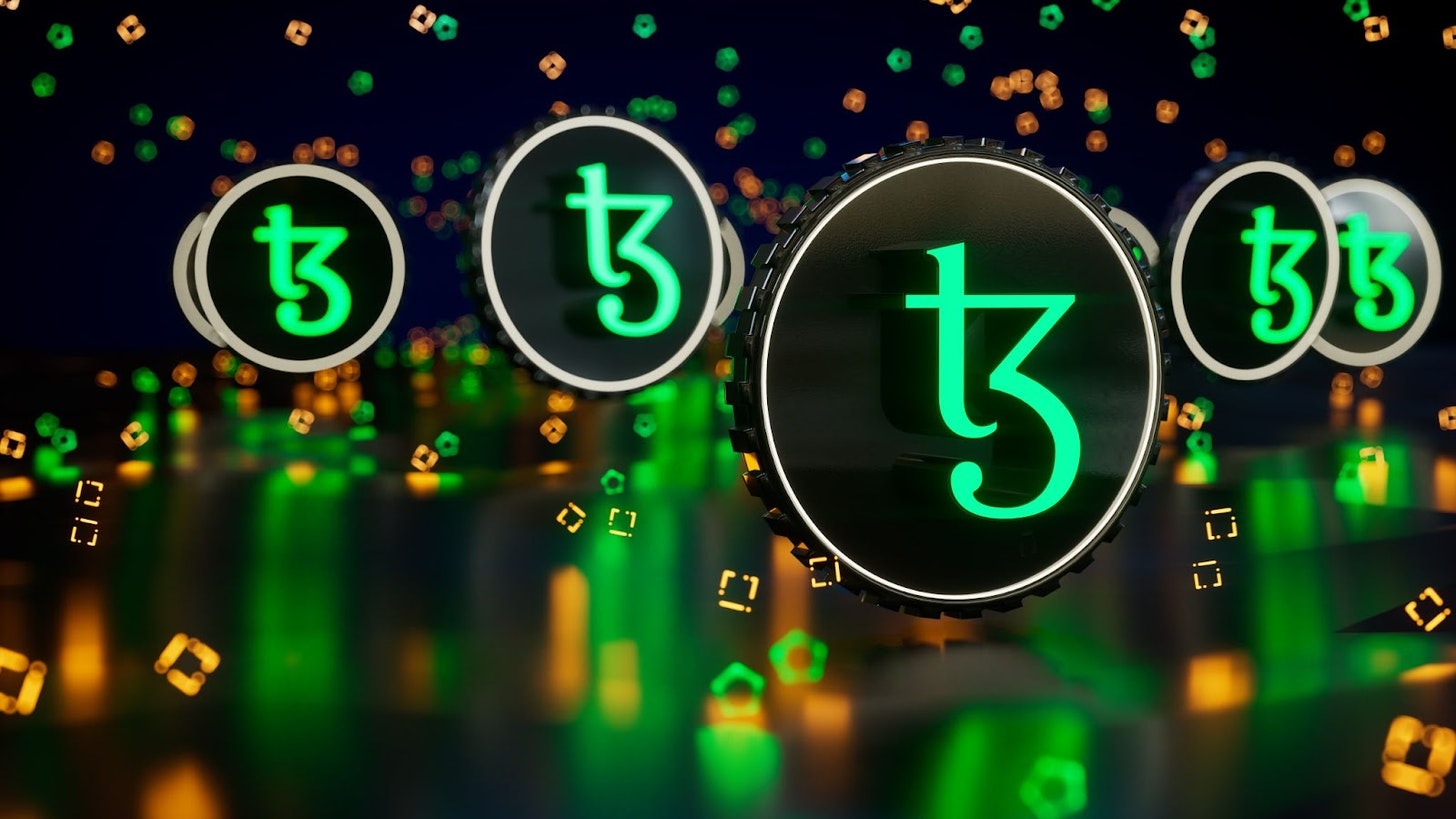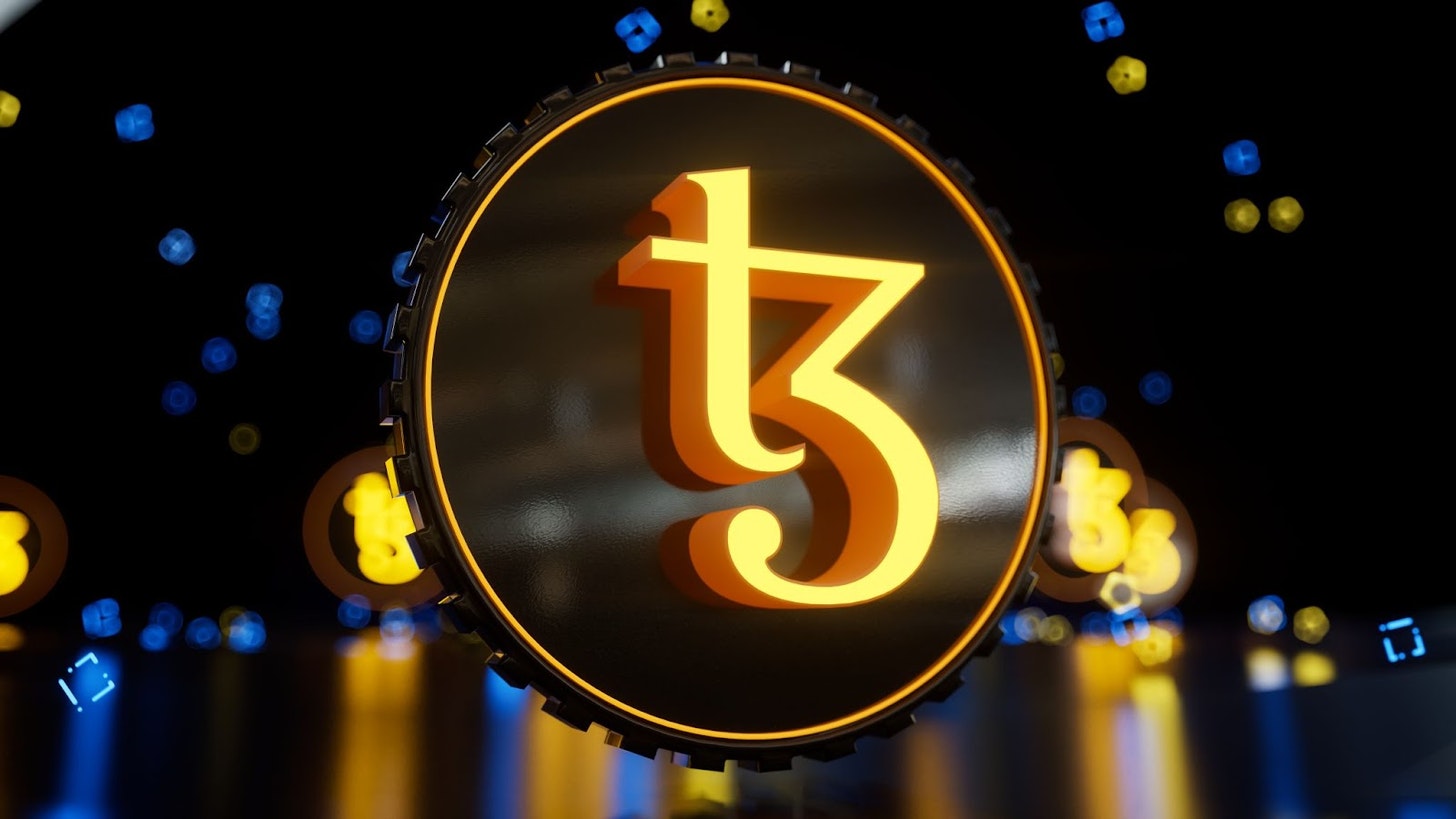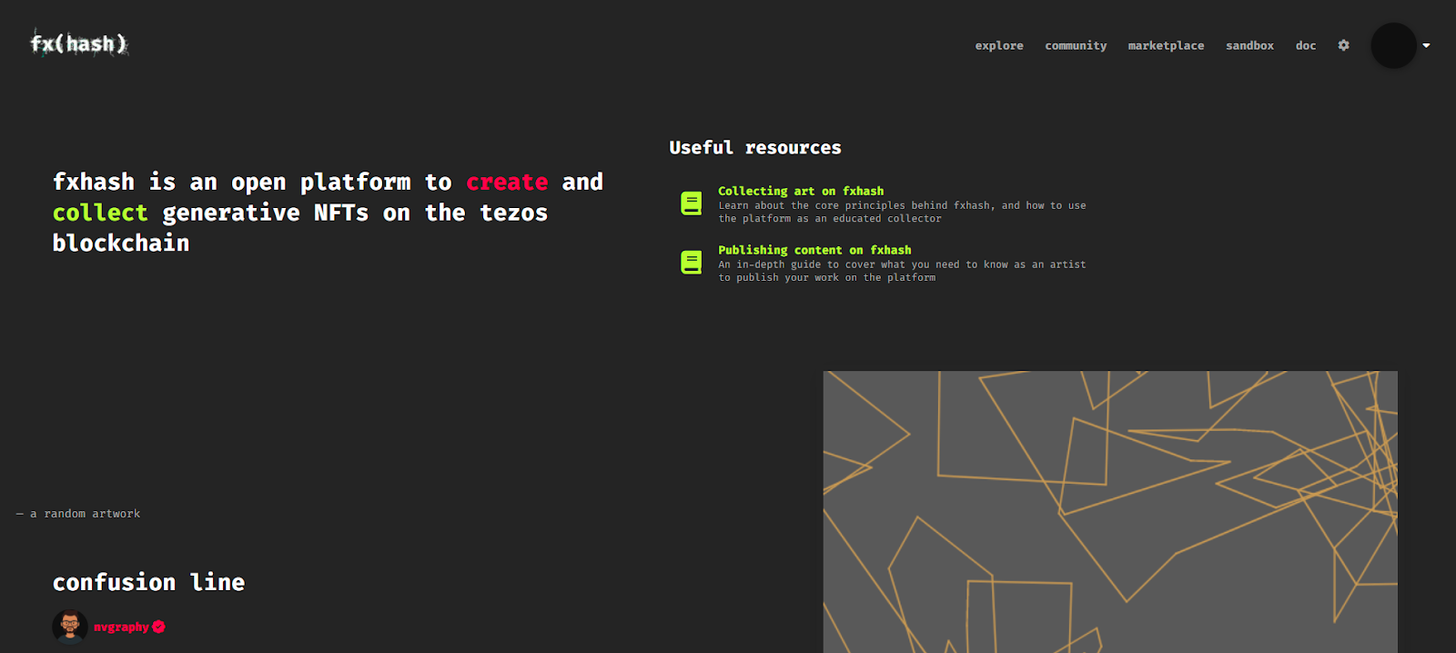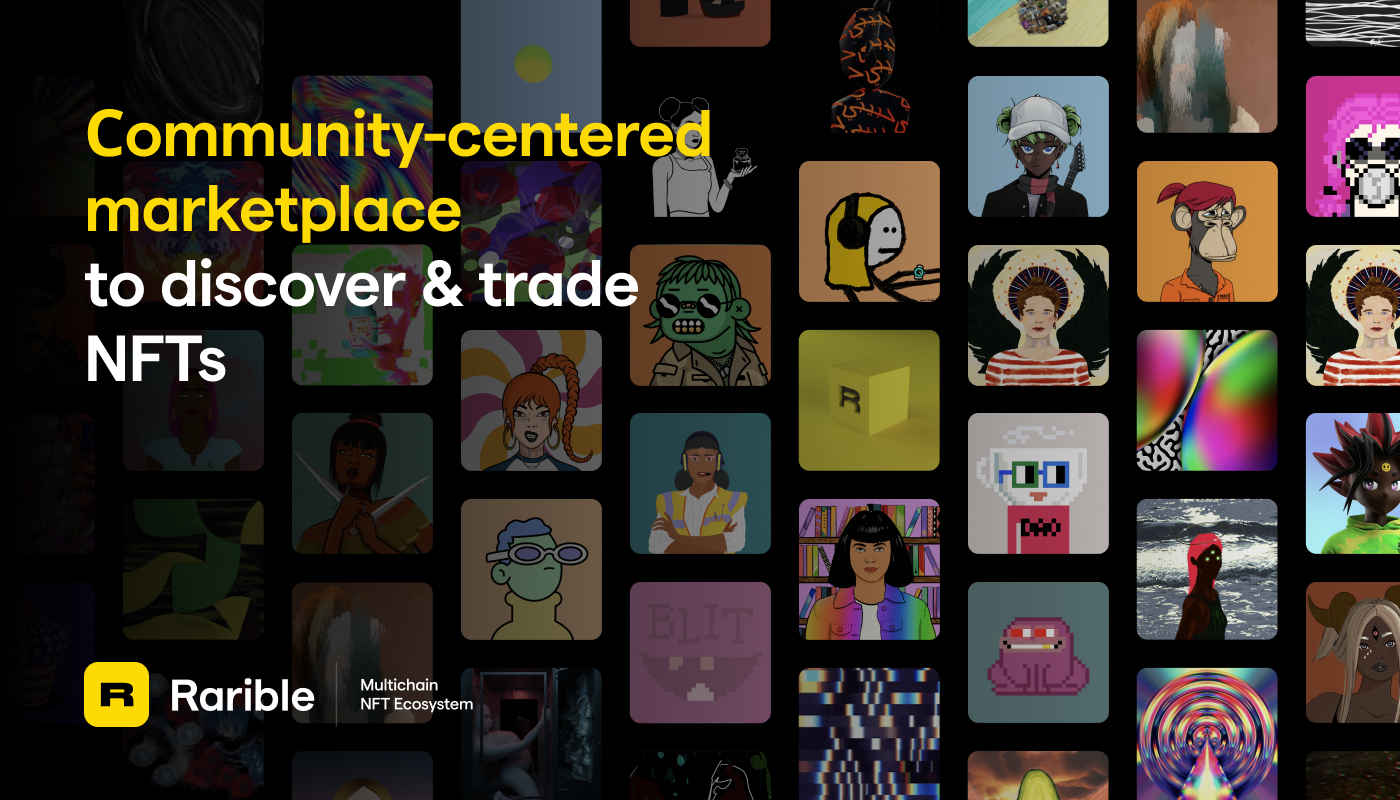Metaversal is a Bankless newsletter for weekly level-ups on NFTs, virtual worlds, & collectibles
Dear Bankless Nation,
Ethereum has been and remains the most dominant blockchain for NFT activity, bar none.
Plus, I think Ethereum ecosystem scaling solutions like layer-two (L2) rollups represent the best ways to scale NFTs and bring them to the masses in the years ahead.
All that said, though, there are definitely interesting NFT happenings taking place on alt-L1s, and to me the most interesting of these alternative scenes at the moment is the Tezos NFT scene.
Allow me to explain, and then I’ll walk you through some tips and tricks for getting started with Tezos NFTs for today’s Metaversal.
-WMP
🙏 Sponsor: Rarible – discover & trade NFTs across multiple blockchains and communities✨
An intro to Tezos NFTs
First, what is Tezos
Tezos is an open-source network for smart contracts. As such, Tezos is a blockchain for decentralized apps, or dapps, like Ethereum.
The network makes use of a proof-of-stake (PoS) consensus mechanism, which Ethereum is about to pivot to. As it will for Ethereum, PoS allows Tezos to provide blockspace in an energy-efficient and environmentally-friendly fashion.
Tezos relies on on-chain governance, so unlike ETH holders, holders of Tezos’s native XTZ token, i.e. tez, can vote on approving or disapproving network-wide changes to the blockchain.
My Tezos perspective
I view Tezos as like a sister network to Ethereum, roughly akin to the relationship between Kusama and Polkadot. To be sure, both Tezos and Ethereum are independent blockchains with independent aims and communities, so it’s not that Tezos lives totally in Ethereum’s shadow. Rather, what I’m getting at is Tezos and Ethereum are generally similar in style (smart contract PoS networks) and generally similar in the roadmaps they’re pursuing (rollups as the future).

Tezos is building enshrined rollups + data sharding – a 1,000x to 10,000x increase in efficiency
Transaction ORs first, smart contract ORs late ’22, zk rollups later
Definitely the most interesting tech roadmap & architecture in the alt-L1 space!
Nomadic Labs @LabosNomades
It’s time to scale #tezos
A series of protocol proposals in 2022 will focus on paving the way for further adoption and high-throughput uses cases 🚀
Let’s just say we are quite optimistic about what can be achieved 😏
Read more in our latest blog post: https://t.co/lfX4Odme3F
Accordingly, Tezos can be many things to many people, but one way I look at the platform is as a testing ground for users looking to generally practice with dapps, e.g. NFT projects, in a low stakes way. When I say “low stakes,” I mean affordably, as demand for Tezos blockspace is much lower than Ethereum’s right now, making XTZ transaction fees inexpensive. Plus, many Tezos creatives price their NFTs very affordably, too.
Ethereum L2s also offer low stakes ways to experiment with dapps, yet the L2 NFT scene is so early that the Tezos NFT ecosystem currently has more NFT activity and more affordable NFTs to consider and choose from. Thus if a friend asked me how to get started in NFTs today without much upfront money, Ethereum L2s and Tezos would definitely be the two immediate options that spring to mind.
However, I think learning the ropes of NFTs through Tezos is much easier for users rather than developers, seeing as how Tezos is not directly compatible with the Ethereum Virtual Machine (EVM) like many other alt-L1s are. This means a user could use a Tezos dapp and have a generally similar experience to using an Ethereum dapp. For devs, though, Tezos has its own tech stack to learn; this is in contrast to other L1s Ethereum-centric stacks that inherit EVM infrastructure and are explicitly accommodating for Ethereum devs.
Getting started with XTZ
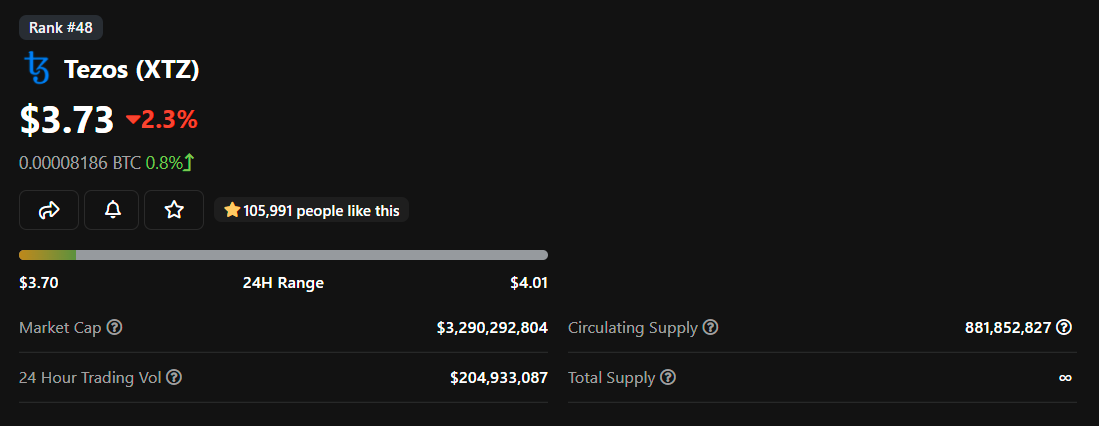
Just as people use ETH to pay for Ethereum-based NFT transactions, you’ll need some XTZ if you want to buy and trade Tezos NFTs. Tezos isn’t an EVM chain, though, so you can’t just hop over to a decentralized exchange like Uniswap and pick up some XTZ for your Tezos wallet that easily.
Instead, you could consider transferring some ETH (or what have you) to a centralized crypto exchange like Coinbase and then converting a small play sum to XTZ. Alternatively you could buy XTZ through your linked bank account, etc., and then it’d be time to create a Tezos wallet for transferring your new funds to.
Creating a Tezos wallet
Before you can dive into any NFT action on Tezos, you’ll need to set up a Tezos wallet.
My personal recommendation? Use a Ledger hardware wallet in combination with a Tezos browser wallet like Kukai, as this approach will grant you strong security via the Ledger and MetaMask-like usability via Kukai.
Years back I actually interviewed the Kukai team and found them to be impressive, so Kukai is the Tezos wallet I’ve opted to use, but you’ve got other options too. Another popular Tezos browser wallet is Temple, for example.
Tezos NFT projects to watch
So you have a Tezos wallet set up and some XTZ ready to cover transactions, now what?
Last year, the Tezos cryptoart marketplace that really brought the Tezos NFT scene to life was Hic et Nunc (HEN), yet that project has since faced some tribulations and in turn has given way to newer Tezos NFT projects like objkt.com and fxhash.
objkt.com
The comparison is an apples to oranges one, but right now objkt.com is akin to the Tezos ecosystem’s version of OpenSea, insofar as it’s the main general Tezos NFT marketplace where people are minting, selling, and collecting NFTs at the moment. On the site you’re able to sync a range of different Tezos wallets, including Kukai and Temple wallets, and then mint and collect NFTs similarly to how you would on OpenSea. If you’re looking to begin your NFT journey on Tezos, objkt.com is a natural starting point currently, plus more than a few popular cryptoartists from the Ethereum scene have NFTs available on the platform.
fxhash
Just like how objkt.com is sort of like the Tezos ecosystem’s version of OpenSea, fxhash is sort of like the Tezos ecosystem’s version of popular Ethereum-based generative art dapp Art Blocks. In other words, artists can upload their generative art scripts to fxhash to let collectors mint unique variations from the series. Notably, the platform is finishing up its beta this week and eventually looking to launch a DAO and a native FXH token.

Hey everyone, we wanted to keep you updated regarding the FXH token and the main DAO which was supposed to be released along with the other features at launch.
Rarible
Rarible is an NFT marketplace dapp that rose to fame on Ethereum but that’s been expanding to other chains recently, including Flow, Polygon, and Tezos. Accordingly, keep in mind that you can mint and collect Tezos NFTs on Rarible, though note that the dapp only supports the Temple and Beacon Tezos wallets for now!
Zooming out
It’s hard to say how Tezos and Tezos NFTs will fare against Ethereum and Ethereum NFTs going forward. Unlike many alt-L1s, Tezos is already explicitly pivoting toward a rollups-centric future, so Tezos may be behind Ethereum on this path, though it’s far ahead of other alt-L1s in this regard. Accordingly, I think Tezos and Tezos NFTs have a viable path forward, and when you combine this path forward with Tezos’s relatively small but mostly organic NFT community (compared to other VC-driven L1s), you get the makings of a scene worth keeping an eye on and experimenting with in my opinion.
Action steps
-
💳 Create a Tezos wallet
-
🔎 Check out objkt.com, fxhash, and Rarible
-
📰 Read my previous write-up Analyzing the Ronin bridge hack if you missed it!
Author Bio
William M. Peaster is a professional writer and creator of Metaversal—a Bankless newsletter focused on the emergence of NFTs in the cryptoeconomy. He’s also recently been contributing content to Bankless, JPG, and beyond!
Subscribe to Bankless. $22 per mo. Includes archive access, Inner Circle & Badge.
🙏Thanks to our sponsor
RARIBLE
Rarible.com is a multichain NFT marketplace that puts community first, empowering users with features like messenger, floor bids, and an NFT portfolio tracker. It also offers extra liquidity by aggregating orders from other marketplaces.
Rarible.com is built on the Rarible Protocol, a multipurpose open source and multichain NFT protocol that helps build products and services across the NFT ecosystem, including white label marketplaces tailored to specific NFT communities.
👉 Place Floor Bids to Join a Community
👉 DM Your Friends and Other Traders
Not financial or tax advice. This newsletter is strictly educational and is not investment advice or a solicitation to buy or sell any assets or to make any financial decisions. This newsletter is not tax advice. Talk to your accountant. Do your own research.
Disclosure. From time-to-time I may add links in this newsletter to products I use. I may receive commission if you make a purchase through one of these links. Additionally, the Bankless writers hold crypto assets. See our investment disclosures here.

